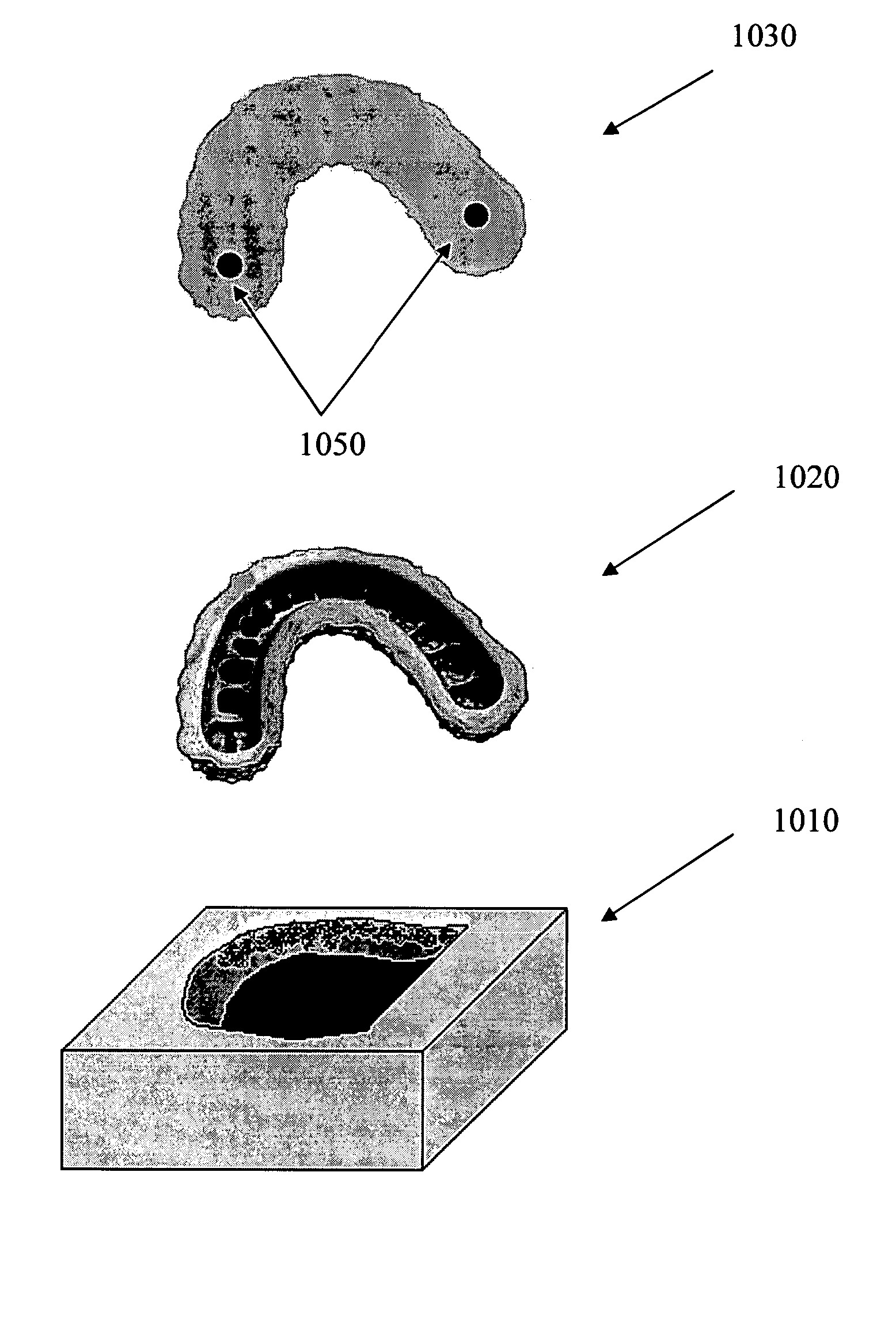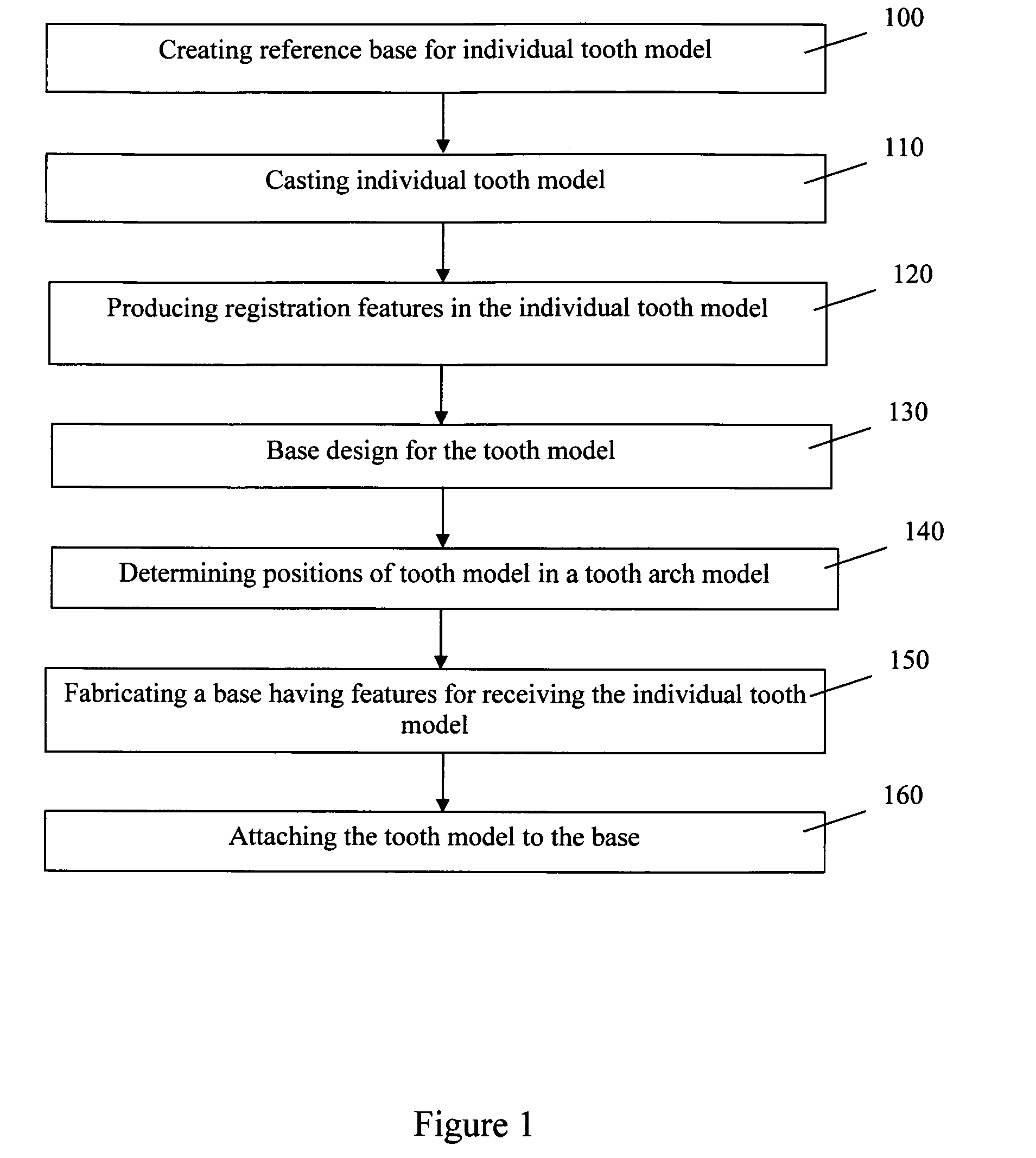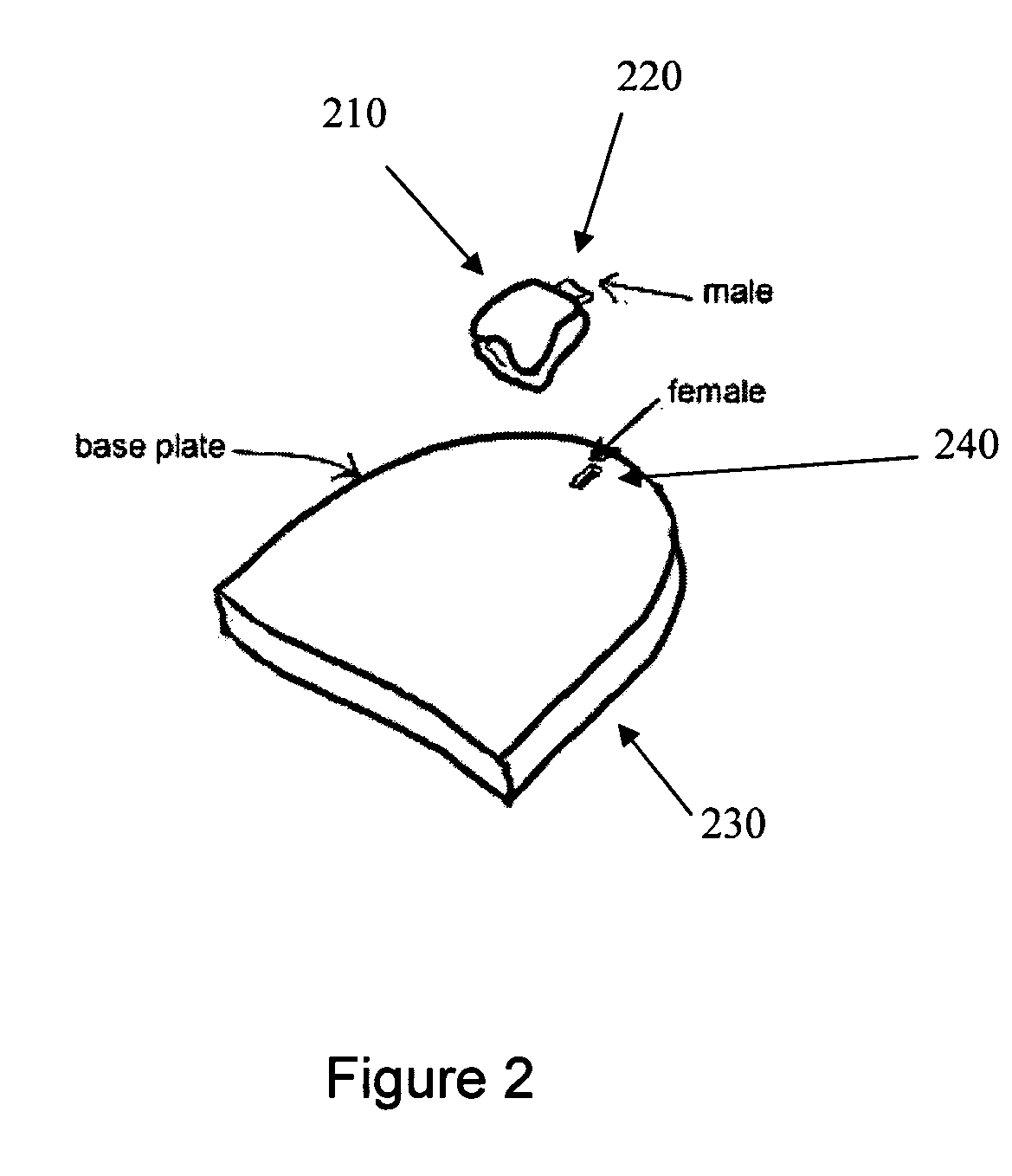Producing a physical toothmodel compatible with a physical dental arch model
a technology of dental arch and model, applied in the field of dental care, can solve the problems of manually applying such bends, humanly impossible to accurately develop visual three-dimensional images of orthodontic structures, and inability to accurately estimate three-dimensional wire bends, etc., and achieves the effect of reducing costs, eliminating the cost of making multiple tooth arch models in orthodontic treatment, and reducing costs
- Summary
- Abstract
- Description
- Claims
- Application Information
AI Technical Summary
Benefits of technology
Problems solved by technology
Method used
Image
Examples
Embodiment Construction
[0057] Key steps of producing a physical dental arch model are illustrated in FIG. 1 in accordance with the present invention. The process generally includes the following steps. First a reference base is molded for an individual tooth model in step 100. The individual tooth model is next molded with the assistance of the reference base in step 110. An individual tooth model is a physical model that can be part of a physical tooth arch model, which can be used in various dental applications. Registration features are next added to the individual tooth model to allow them to be attached to each other or a base in step 120. A base is designed for receiving the tooth model in step 130. The tooth model positions in a tooth arch model are next determined in step 140. A base is fabricated in step 150. The base includes features for receiving the individual tooth model. The tooth models are finally attached to the base at the predetermined positions using the pre-designed features in step ...
PUM
| Property | Measurement | Unit |
|---|---|---|
| physical | aaaaa | aaaaa |
| thermal elastic | aaaaa | aaaaa |
| physical tooth model | aaaaa | aaaaa |
Abstract
Description
Claims
Application Information
 Login to View More
Login to View More - R&D
- Intellectual Property
- Life Sciences
- Materials
- Tech Scout
- Unparalleled Data Quality
- Higher Quality Content
- 60% Fewer Hallucinations
Browse by: Latest US Patents, China's latest patents, Technical Efficacy Thesaurus, Application Domain, Technology Topic, Popular Technical Reports.
© 2025 PatSnap. All rights reserved.Legal|Privacy policy|Modern Slavery Act Transparency Statement|Sitemap|About US| Contact US: help@patsnap.com



